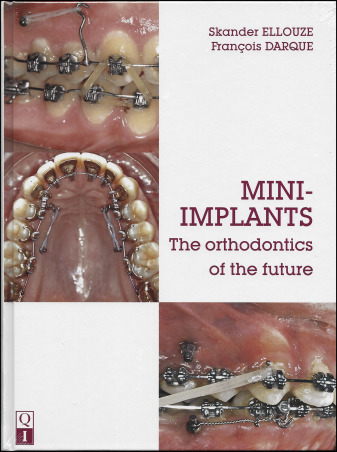
Skander Ellouze, a leader in lingual orthodontics, and François Darqué have assembled a handsome book on what, in most English language countries, are called miniscrew implants (MSIs). Translated from the French by George Morgan and published by Quintessence, the book places a strong emphasis on the clinical applications and associated biomechanics of MSIs. Not surprising, then, is the large number of cases demonstrating MSI treatment with lingual braces as well as labial fixed appliances.
There is not uniform agreement among orthodontists on a number of issues, and so it is with the relatively recent worldwide use of MSIs. The authors did a nice job of making clear the reasoning behind their use of implants. After the introductory remarks by Jean-Pierre Ortial and Hee-Moon Kyung, the first 2 chapters briefly discuss the selection and placement of miniscrews. Broader discussions of biomechanical principles and the utilization of MSIs follow. Excellent diagrams facilitate the reader’s understanding of this sometimes difficult subject. The remaining 85% of this useful volume (223 pages) is dedicated to 7 common problems that orthodontists often find challenging in their daily practice; the authors explain solutions that are both easier to provide and less compliance-dependent than traditional methods. When, for example, orthognathic surgery is not feasible, MSIs are demonstrated to stretch the envelope of orthodontic movement, not so much to replace surgery but to provide an acceptable alternative for the patient, perhaps not available without the added alveolar or palatal anchorage provided by MSIs. These too are nicely illustrated with high-quality photographs and diagrams. The patient records show a high degree of clinical competence by the authors.
The authors and publisher have done a magnificent job in engaging the clinician with the exquisite layout, and this book is a worthwhile addition to the literature, especially for the clinician using or considering MSIs. Several mistranslations from French to English do not detract greatly from the value of the presentation. One might argue for a few more lateral cephalometric tracing superimpositions to accompany the before and after photos, and a more extensive bibliography and index.
The future is now, and few textbooks available demonstrate as nicely so many applications to so many problems as does this.
Stay updated, free dental videos. Join our Telegram channel

VIDEdental - Online dental courses


